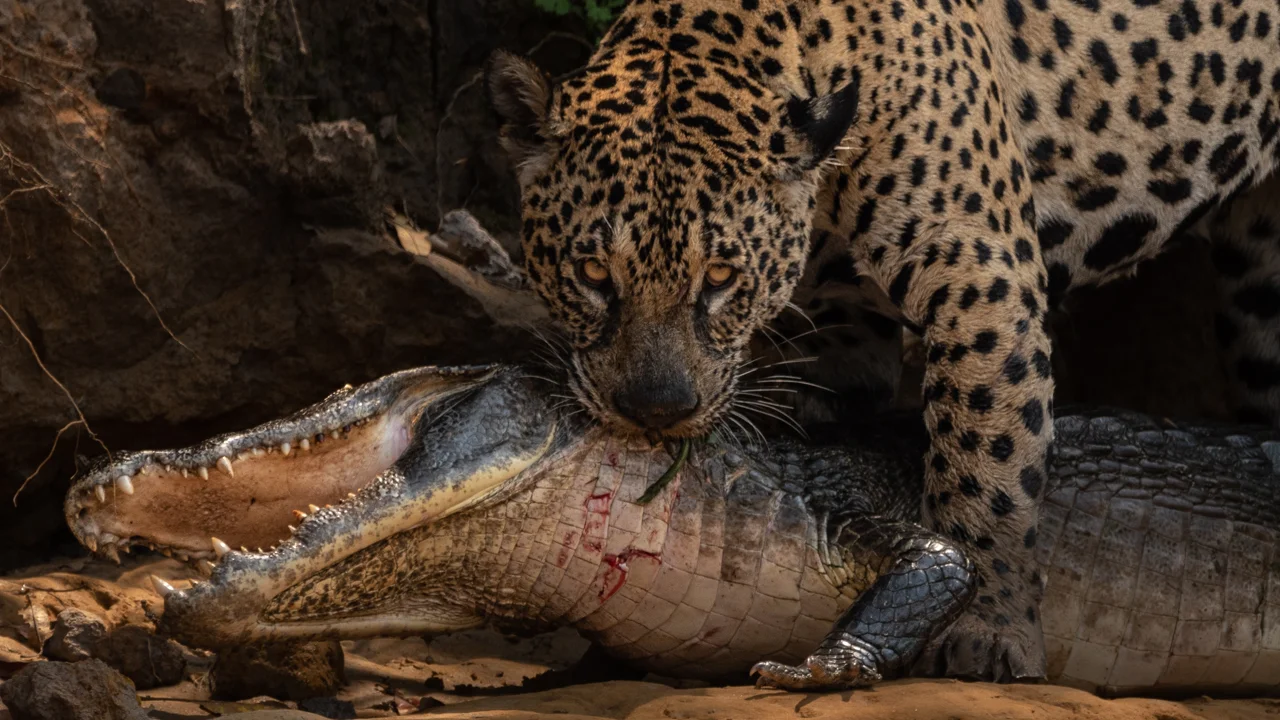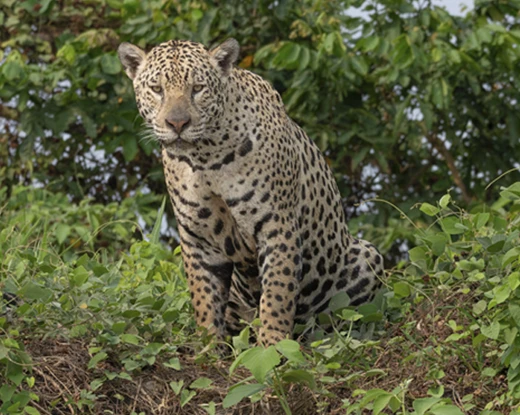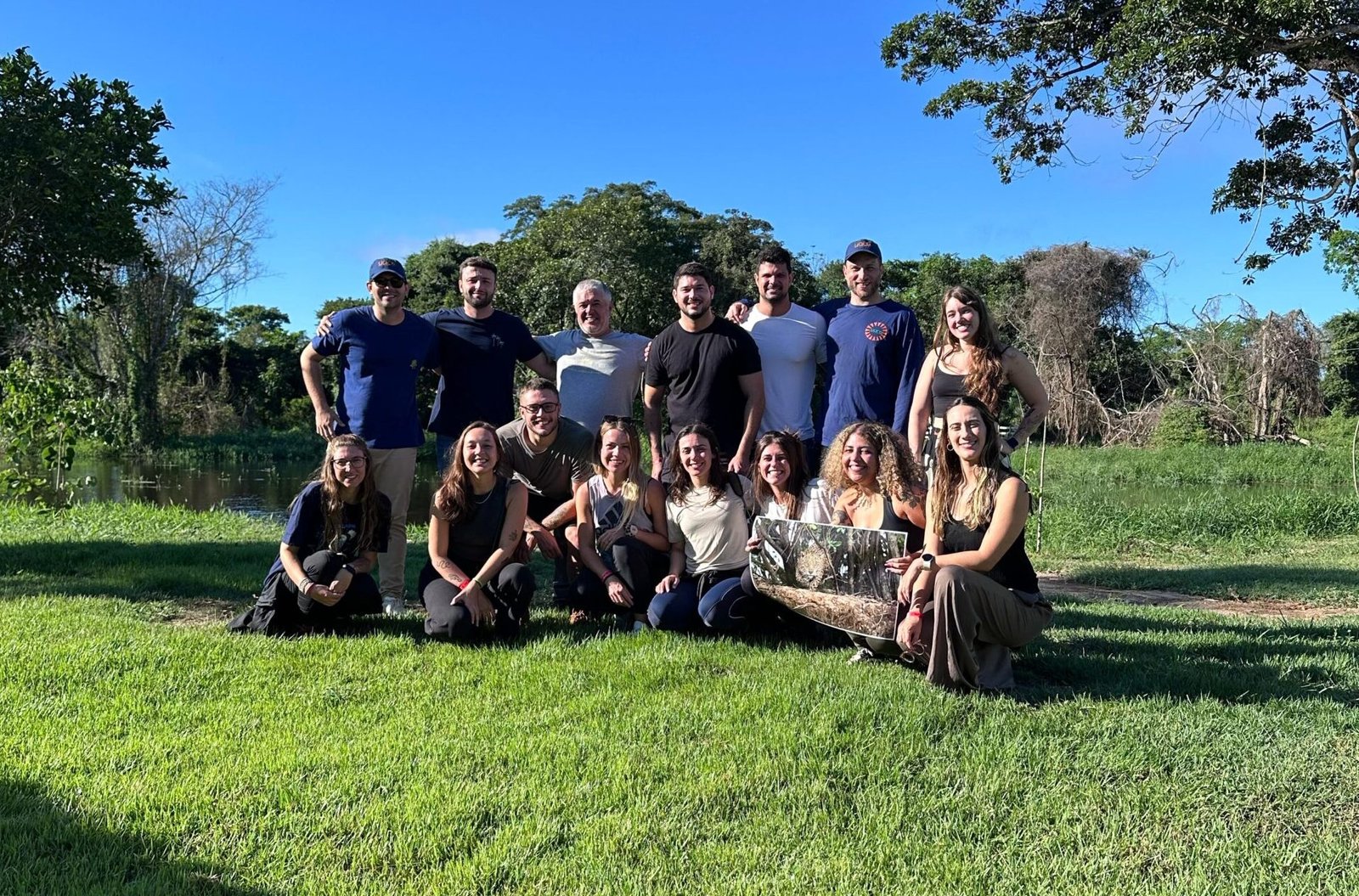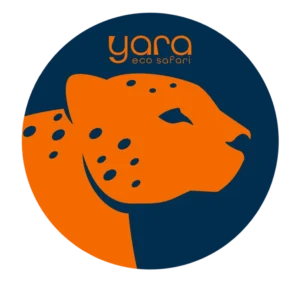For wildlife photographers and nature travelers, there’s often an unspoken checklist of the world’s great predators.
- Lions roaring across the Serengeti savannahs.
- Tigers emerging from the misty jungles of India.
- Leopards lounging on branches in South Africa.
But then comes the pause.
What about the jaguar?
For many, this is the final missing piece—the most elusive, the most mysterious, and, for some, the most rewarding. And the only place to reliably complete this “big cat quest” is in Brazil’s Pantanal wetlands, a UNESCO Biosphere Reserve and Ramsar site.
A cat unlike the rest
Unlike the open-plains lion or the forest-dwelling tiger, jaguars are riverbank hunters—stealthy, muscular, and powerful. With the strongest bite force of any big cat, they can crush the skull of a caiman or pierce a turtle’s shell in one decisive move.
In the Pantanal, they are not shadows hidden in the understory. They are visible, often seen walking, swimming, or hunting along the riverbanks in full daylight. This makes the region the best place in the world to see wild jaguars.
- Learn about their status from the IUCN Red List (currently Near Threatened).
- Discover science-based protection with Panthera’s Jaguar Program, which secures corridors from Mexico to Argentina.
Why save the best for last?
Photographers who have “checked off” lions, leopards, and tigers often come to the Pantanal expecting a challenge. Instead, they find something unexpectedly intimate.
Thanks to decades of non-invasive monitoring, local guides and biologists know individual jaguars by their unique rosette patterns. When you spot one, you’re not just seeing “a jaguar”—you’re meeting Patricia, a resilient mother, or Ousado, the bold male who survived the Pantanal fires of 2020.
Naming adds a story to every sighting, and that story deepens both the photographic experience and the conservation impact. Learn more in our related post: Why Do Jaguars Have Names?
Completing the circle: the Big Cat Bucket List
For travelers who have ventured across Africa and Asia, photographing a jaguar is often described as “closing the circle.”
- In Africa, safaris bring the drama of prides and leopards at dusk.
- In India, the tiger reigns as a solitary, striped phantom.
- In Patagonia, the puma blends into wind-swept mountainsides.
- And in Brazil, the jaguar emerges as the final, golden-rosetted crown jewel.
But many visitors tell us: the Pantanal safari isn’t just the last—it’s the best.
The boat-based approach, the calm of drifting rivers, and the closeness of encounters create a photographic intimacy that’s hard to replicate anywhere else.
More than just jaguars
Completing your bucket list in the Pantanal comes with bonuses. Alongside big cats, the region hosts:
- Giant otters (see IUCN profile), playful and endangered.
- Hyacinth macaws (Instituto Arara Azul), the world’s largest parrot and a flagship for conservation.
- Capybaras, marsh deer, tapirs, jabiru storks, and over 650 bird species—many more visible here than in the Amazon.
This makes the Pantanal not just the jaguar capital, but also one of the richest wildlife photography destinations in the world.
See also on our site:
- Why the Pantanal Is the Best Wildlife Photography Destination You’ve Never Heard Of
- Birdwatching in the Pantanal & Atlantic Forest: A Paradise for Birders
Ethics matter: completing your list responsibly
With jaguar tourism booming, sustainability is critical. At Yara EcoSafari, we follow best practices that echo global conservation guidance:
- Respectful distances and no chasing.
- Small group sizes.
- Certified biologist guides trained to read stress signals.
For context on ethics, check:
- WWF-Brazil (conservation campaigns in the Pantanal).
- ICMBio (Brazil’s national conservation authority).
And see our related guide: Sustainable Safaris: Can You Photograph Wildlife Without Harming It?
Ready to meet the final cat?
The jaguar is waiting.
For some, it will be the last tick on the Big Cat Bucket List. For others, it will be the beginning of a lifelong love for wetlands, rivers, and golden-rosetted royalty.
Either way, the Pantanal is where the circle closes. And where it often shines brightest.
Related journeys:






